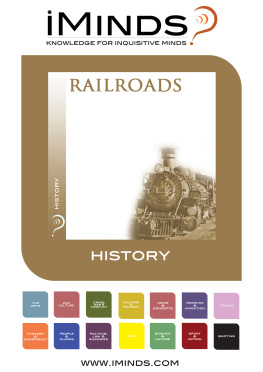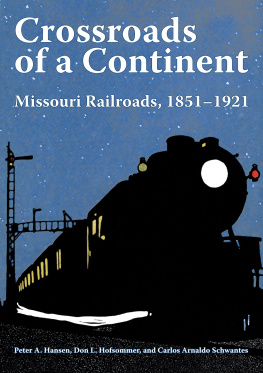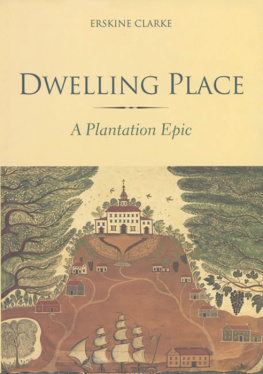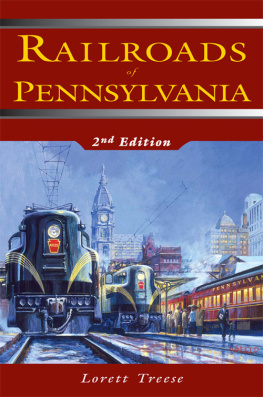ACKNOWLEDGEMENTS
Dustin Klein, archivist of the Southern Museum of Civil War and Locomotive History in Kennesaw, Georgia, who helped me parse through the David Salter Collection for appropriate photos.
David Ibata, editor of the Dixie Flyer, a NC&StL Preservation Society publication, who provided steam photos of the NC&StL operating on the old W&A in northern Georgia.
Dan Berman, Craig Bicknell, John Marbury and Pete Silcox, all of whom were on my panel of retired railroad executives.
Finally, Debra Kasson-Jones, who proofread the manuscript.
INTRODUCTION
Theyre all gone nowall of the nineteenth-century Georgia railroads and even most of the twentieth-century ones. Oh, there are still some depots standing, as well as other railroad buildings. A tunnel here and a bridge there might date to the nineteenth century. But the railroads are gone, either absorbed into Norfolk Southern (NS), CSX or Amtrakor simply abandoned and deserted.
It used to be possible to take a train (as a passenger) from just about anywhere in the state of Georgia to anywhere else in the state of Georgia! Wouldnt that be a blessing in todays traffic gridlock? But alas, except for a handful of Amtrak trains and MARTA, you cant really get anywhere by train in Georgia anymore.
Consolidation in the name of efficiency has been the name of the game in the last fifty years, as well as the diminution of passenger service. And while the two Class I railroads serve the state of Georgia efficiently, perhaps innovation and (to some extent) competition have been sacrificed.
Of course, in the nineteenth century, especially in the preCivil War days, people didnt worry too much about efficiency but rather about building out a network of rail. PreCivil War railroad building in Georgia often consisted of one or more entrepreneurs, or perhaps city officials from one or more towns, deciding, Lets build a railroad. They invariably found three hard truths of railroad life:
- railroads are hard (and expensive) to build;
- railroads are hard (and expensive) to operate and maintain;
- and an isolated railroad line between two small towns in the middle of nowhere is likely to be unprofitable.
It would make sense to have a larger strategic picture than many of the small railroads had when they started building. Perhaps a plan to tie together major cities and towns along a routein Georgia, this might include Augusta, Atlanta, Macon, Albany and Savannah. Understanding the freight opportunities along a route would be importantwould the target market be agricultural? Finished goods? Raw materials? Linkages with other established railroads would be important, too. For example, your customers might want to travel from Atlanta to Chicago, or Savannah to Philadelphia, without changing trains and railroads multiple times. All of these ideas would come into play when the big corporations took over in the latter part of the nineteenth century.
There were about ten railroads in Georgia on the eve of the Civil War, but five would play an especially significant strategic role in the major battles and campaigns of the war in Georgia: Atlanta & West Point, Central Railroad, Georgia Railroad, Macon & Western and Western & Atlantic. Well examine each of the five and their destruction by William Tecumseh Sherman in 1864. Well also examine what happened to each of them after the war, as well as into the twentieth and twenty-first centuries. Next, well examine other nineteenth-century railroads in Georgia that had a big impact on the state and/or a significant amount of trackage. And well examine individual entrepreneurs, such as Henry Plant and Thomas Clyde, who were bona fide railroad tycoons and had a great impact on nineteenth-century railroading in Georgia.
By the twentieth century, new, mega-railroads had taken over Georgia, including one new entry created out of whole cloth by J.P. Morgan: the Southern Railway. But the Louisville & Nashville, Seaboard Air Line, Atlantic Coast Line and the combined Seaboard Coast Line were major players as well. Through mergers, acquisitions, bankruptcies, consolidation and the creation of a national passenger railroad, by the end of the twentieth century there were, essentially, only three major railroads in Georgia: CSX, Norfolk Southern and Amtrak. Well take a look at these railroads as well.
To add a little real-life experience-flavor to the book, Ill be adding some quotes from a panel of retired railroad executives, including the following:
Southern R.R. Co. Crescent Locomotive, circa 1916. Courtesy Library of Congress.
DAN BERMAN, who joined Southern Railway in 1962 as a graduate from Yale with a transportation degree. He rose from track supervisor to director of car utilization in his more than twenty years with Southern Railway. All told, Dan served for thirty-two years with Southern Railway and Norfolk Southern.
CRAIG BICKNELL, who started out in railroading with Conrail and moved to Norfolk Southern when NS and CSX carved up Conrail between them. He retired in 2015 as the NS manager of Car Hire and Equipment Planning Group.
JOHN MARBURY, who was manager of signal operations in Atlanta when he retired from NS in 2000. He still works as a contract project manager for NS. He served sixteen years as a project manager for construction for the Southern Railway and then Norfolk Southern. He once served as yard supervisor at Inman Yards for the Southern Railroad.
PETE SILCOX, who worked for the Georgia Railroad, the Seaboard Coast Line and CSX from the time of its creation until his retirement in 2007. During his thirty-six-year career, he worked in design (engineering), supervised field construction, office management and a track inspection training program. Upon his retirement with CSX, he was manager of the track inspection program.
Some notes on nomenclature might be in order. Often (although not always), company names were changed from railroad to railway after getting out of receivership.
There are a few theories about where the term air line when used for railroads (such as Seaboard Air Line Railroad) came from. One is that this referred to companies that used both railroads and ships for their transportation system (sailing ships were propelled by wind). Another is that air line













